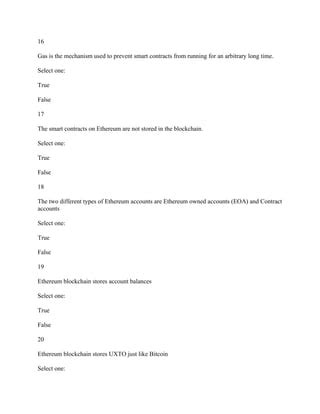Ethereum: Why aren’t balances stored on the blockchain?
When it comes to managing assets and transactions on the Ethereum network, a common question is why balances aren’t stored directly on the blockchain. In this article, we’ll explore the reasons behind this design decision and how including new balances with each transaction can be more efficient.
The Current Approach: A Brief Overview
Currently, when a user makes a transaction on the Ethereum network, the following happens:
- The sender’s account is queried for its balance.
- The sender is then authorized to send Ether (ETH) or other assets to the recipient’s address.
- Once the transaction is processed, the sender’s new balance is updated.
While this approach has its advantages, it also has some disadvantages. Here are some reasons why balances are not stored directly on the blockchain:
- Scalability: As the Ethereum network grows in terms of the number of transactions and users, storing balances directly in each block can lead to increased transaction processing times and costs.
- Security: If an attacker were to manipulate a user’s account balance, they could potentially take control of their assets. By storing balances on the blockchain, it becomes much harder for an attacker to exploit this vulnerability.
- Inefficiency:

As mentioned earlier, scanning the entire blockchain to determine a user’s balance can be time-consuming and costly.
The Alternative: Including New Balances with Every Transaction
Now, let’s imagine a scenario where balances are stored directly in each block. This is called “block accounting.”
Here’s what would happen:
- When a transaction is processed, the sender’s new balance (including any pending transactions or fees) is calculated and included in the block.
- The updated balance is then broadcast to all nodes on the network.
There are several benefits to this approach:
- Improved scalability: By not having to query the blockchain for balances, transaction processing times can be significantly reduced.
- Enhanced security: With block-based accounting, it becomes much harder for attackers to manipulate a user’s balance without affecting other transactions in the same block.
- Efficient use of network resources: By storing balances directly in each block, the network can conserve computational resources and reduce the amount of data that needs to be processed.
Conclusion
While storing balances on the blockchain may seem like an efficient solution, it does have some drawbacks. In this article, we explored why balances are not stored directly in the Ethereum network. However, by considering alternative approaches like block accounting, it becomes clear that there are ways to improve scalability, security, and efficiency.
As the Ethereum network continues to evolve, it is essential for developers and users to stay informed about the latest developments and potential solutions. Who knows? Maybe one day, we will see a future where balances are stored directly in each block!
Related Articles
- “Ethereum 2.0: What You Need to Know”
- “How to Use Ethereum Smart Contracts”
- “The Benefits of Decentralized Finance (DeFi) on the Ethereum Network”